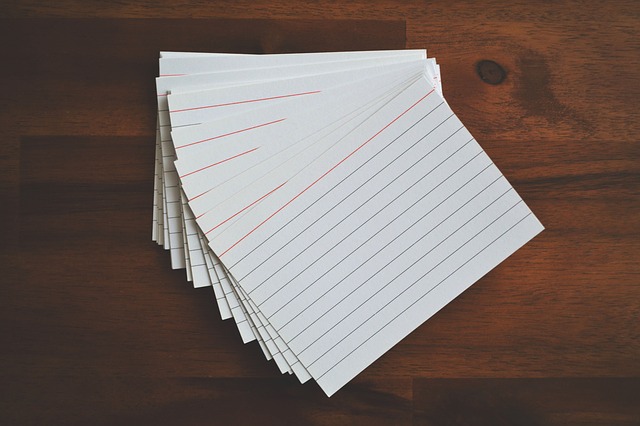

How To Help Your Students With Flashcards?
Question or concept on one side + answer or definition on the other side = flashcard. Flashcards are hugely popular among school students, and they can be very helpful. However, there are better ways to use them. Here are some tips to help your students make the most of their flashcards.
Keep them simple
The idea of flashcards is for one to test oneself and learn by answering questions. They are not made to be notes. So students should write a single question/concept on one side and an objective and short answer/definition on the other side. It is better to have loads of good flashcards, than only a few very complicated (and useless) ones.

Try hard to answer
According to neuroscience research, the best way to revise is by answering questions. That’s because we are actively bringing knowledge back to mind instead of passively absorbing it. So, for the flashcards to work, pupils need to come up with the answer/definition before flipping the card. If they don’t do that, they are doing nothing better than reading notes.
Test. Mark. Check. Repeat
It is not enough to go through your flashcards once. Students need to test themselves frequently so that they really consolidate the knowledge. So they should go through them once and add a mark on the flashcard that they are not sure about the answer. They can check their textbooks and notes to learn the full answer. A few days later, they should go through the flashcards again paying attention to see if they are more confident in responding the ones they marked the last time. The aim is to be confident with all answers and have no marks left.
Add visuals
Neuroscience research suggests that we are better at remembering information when it combines words and visual elements. So pupils can try adding an image to some of the flashcards. Here are some ideas
History - timeline of events Literature - portrait of author or character Geography - map Maths and sciences - graphs and diagrams
Mix with instructions
To add a twist on the usual flashcards, students can create a second stack of them. On those new flashcards, they should write instructions. These instructions are supposed to make pupils think even harder about the answers, strengthening memory for the content. Ideas of instructions are
Relate the concept to a personal experience Explain the concept to a friend not taking the same subject Answer the question in different words Draw the concept Use the concept to explain a current situation in the world Give 3 examples and 1 non-example of the concept





